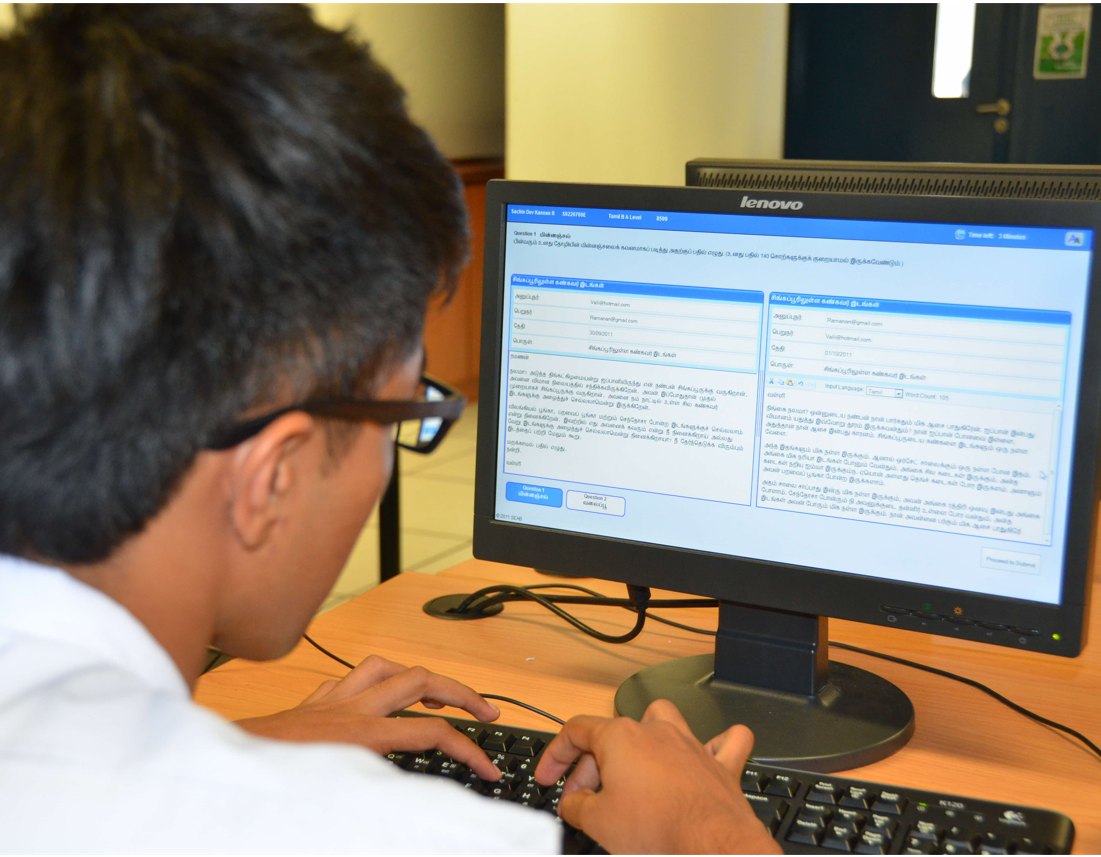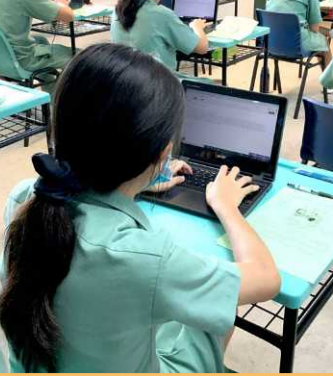SEAB's Journey with eExaminations: Updates for 2024
Digital literacy has been integrated into teaching and learning to prepare our students for future work. Taking alignment with this, e-Examinations were introduced in 2013 to provide students with a more relevant, authentic and engaging assessment experience. e-Examinations also offer personalisation and assess skills and knowledge that traditional pen-and-paper methods cannot.
In 2024, three more subjects were assessed electronically- N(A)-Level Social Studies, N(T)-Level Science, and N(T)-Level Basic Mother Tongue Languages.
As with any new subjects that were brought onboard e-Examinations, efforts were made to ensure a smooth transition for both educators and students. To this end, SEAB proactively
-
engaged with stakeholders prior to the implementation. Consultations and feedback sessions were conducted via focus groups and school visits, involving school leaders, key school personnel, and teachers;
-
organised training workshops and briefings for teachers, equipping them with the necessary knowledge and skills for the setup and conduct of the e-Examinations;
-
provided media resources such as online guides to familiarise educators and students with the eExam system interface and processes; and
-
organised practice sessions (PS) for students to familiarise themselves with the eExam system interface and features.
This article shares the latest development in SEAB’s push towards modernising education assessments for the N(A)-Level Social Studies, N(T)-Level Science, and N(T)-Level Basic Mother Tongue Languages.
N(A)-Level Social StudiesThe GCE N(A)-Level Social Studies paper transited to a hybrid mode of e-Examinations in 2024. Candidates received the question paper in hard copy and typed their responses via laptops on a Digital Answer Booklet (DAB), which resided on SEAB’s eExam system. It was the first GCE Humanities subject to be examined using this mode in Singapore as well as the first e-Written examination to accommodate a large cohort of nearly ten thousand candidates.  Candidates from Tampines and East Spring Secondary Schools during actual examination day on 11 Sep 2024
Candidates from Tampines and East Spring Secondary Schools during actual examination day on 11 Sep 2024
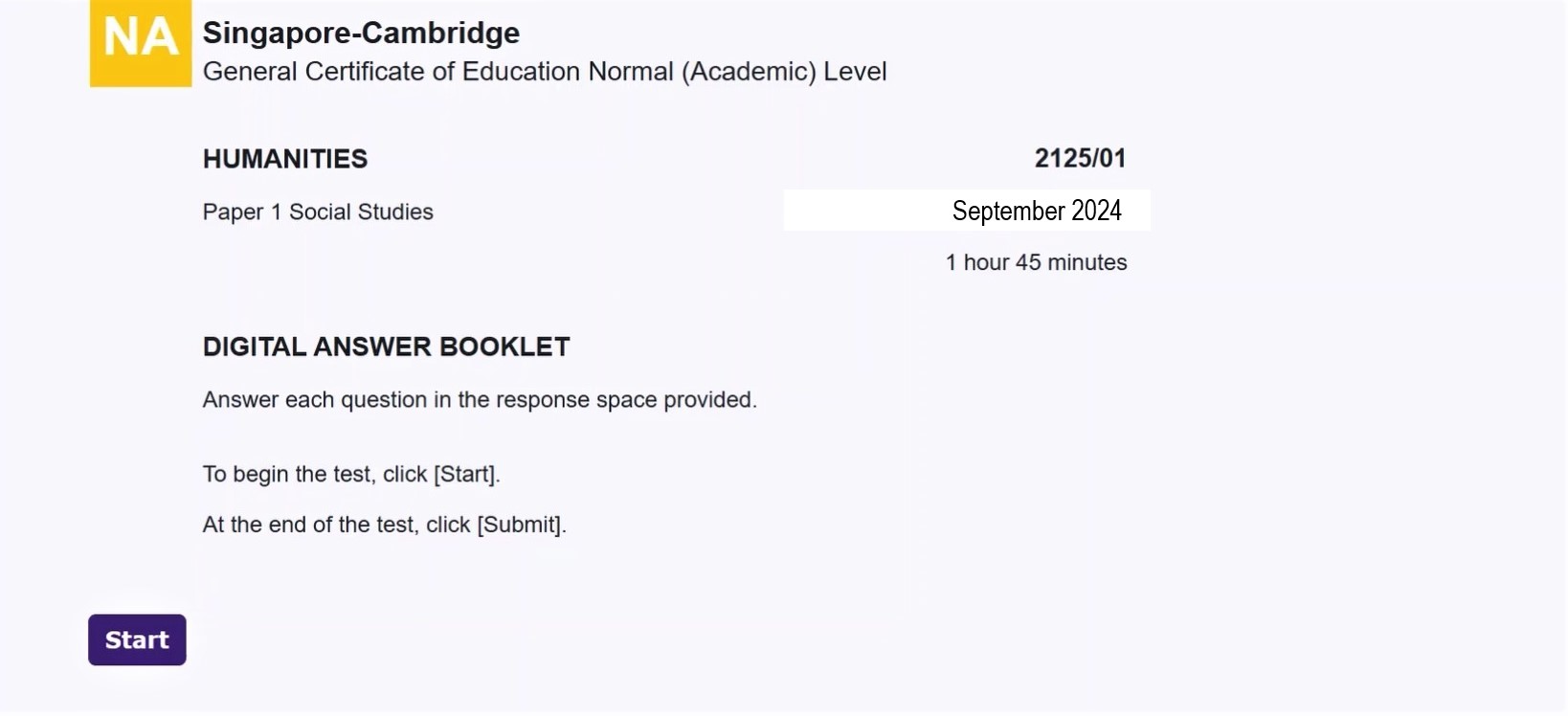 Cover page of a Digital Answer Booklet on SEAB’s eExam system
Cover page of a Digital Answer Booklet on SEAB’s eExam system
Key features of Digital Answer Booklet (DAB) The DAB comes with the typical text editing tools such as bold, italic, underline, copy and paste that most of us are familiar with doing word processing. This aligns with our key objective to provide authentic and relevant assessment experience that mirror the workplace through e-Examinations. 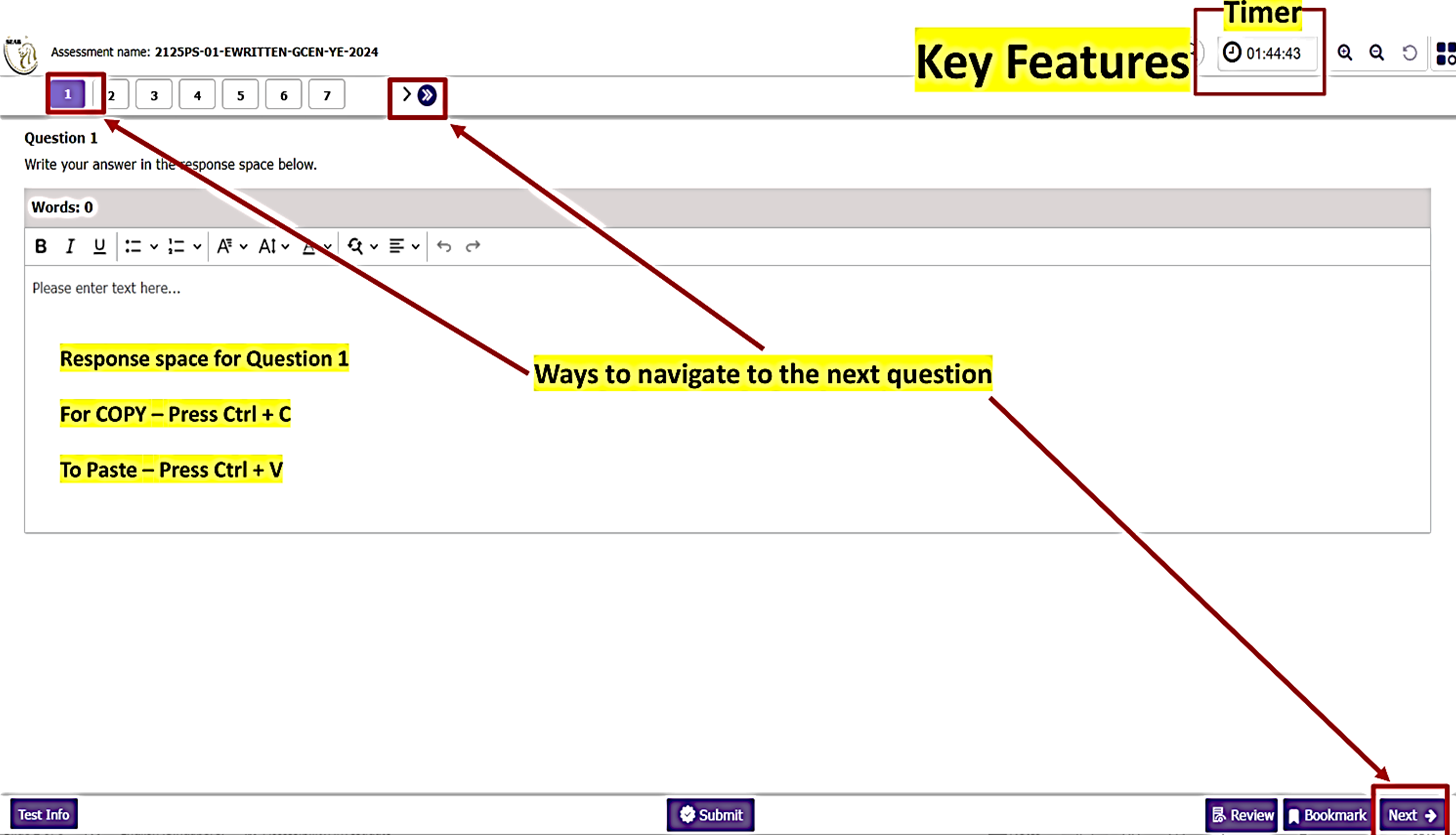 Image of DAB’s key features
Image of DAB’s key features
Another useful feature is the bookmarking function, which allows candidates to tag specific responses they wish to revisit before submission. These bookmarked responses are highlighted during the review phase and is a personalisation feature that makes it easy for candidates to quickly recall and refine their responses. 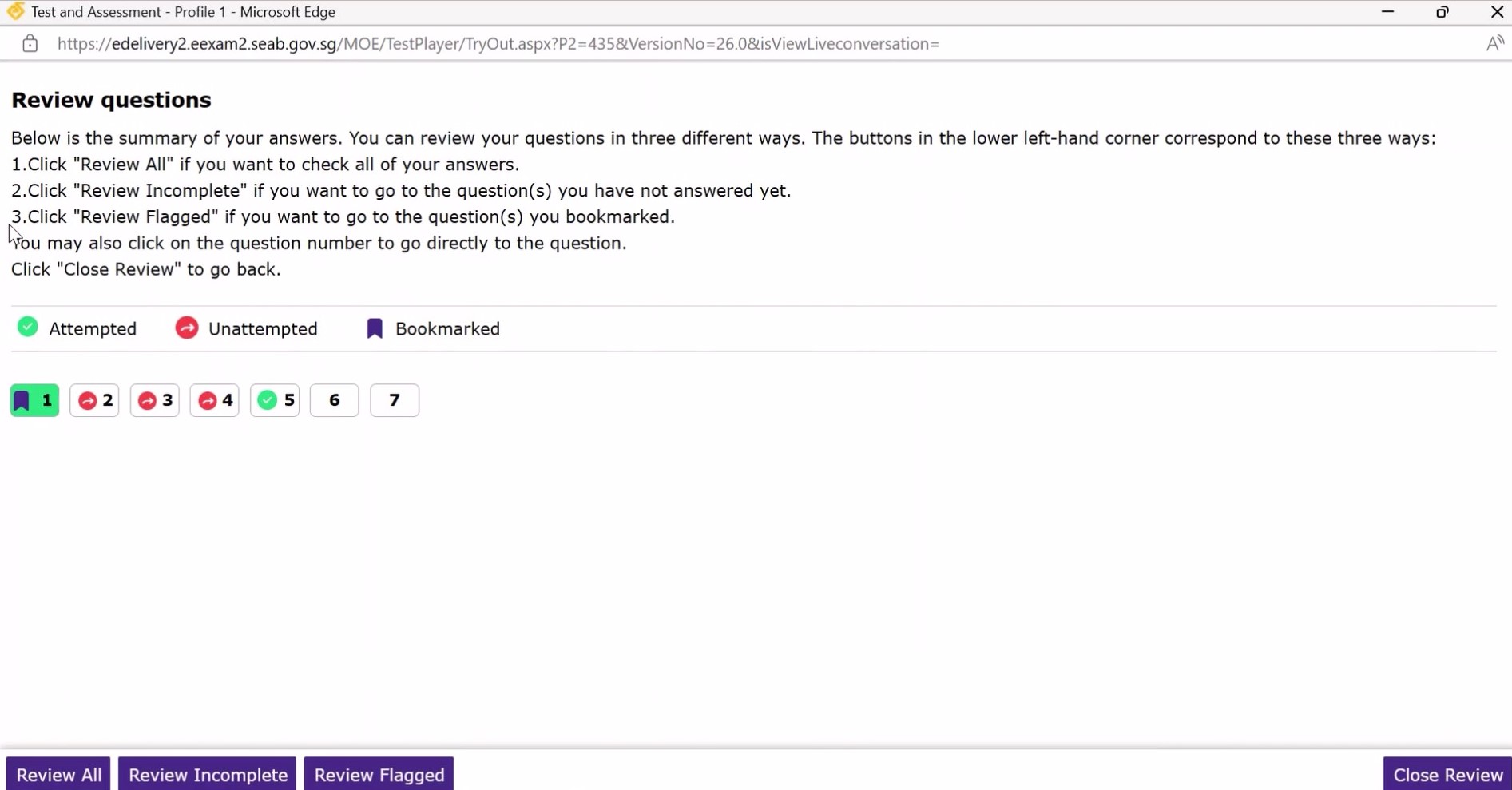 Image of Bookmarked Tags and Review
Image of Bookmarked Tags and Review
Feedback from Candidates The feedback gathered from candidates highlighted a generally positive experience with the e-Examination mode. Candidates found the eExam system user-friendly and expressed confidence in using the system, particularly when engaging with the Digital Answer Booklet (DAB). They found the DAB functions helpful, contributing to a smooth and comfortable examination experience. In addition to the PS, resources such as an information deck and a video guide on the e-Examination interface were also made available on SEAB’s website (SEAB - e-Exam Resources for School Candidates), which allowed students to revisit them as and when needed. Feedback from Social Studies teachers Interviews were also conducted with the Social Studies teachers, and they provided positive feedback. Some of the comments include: 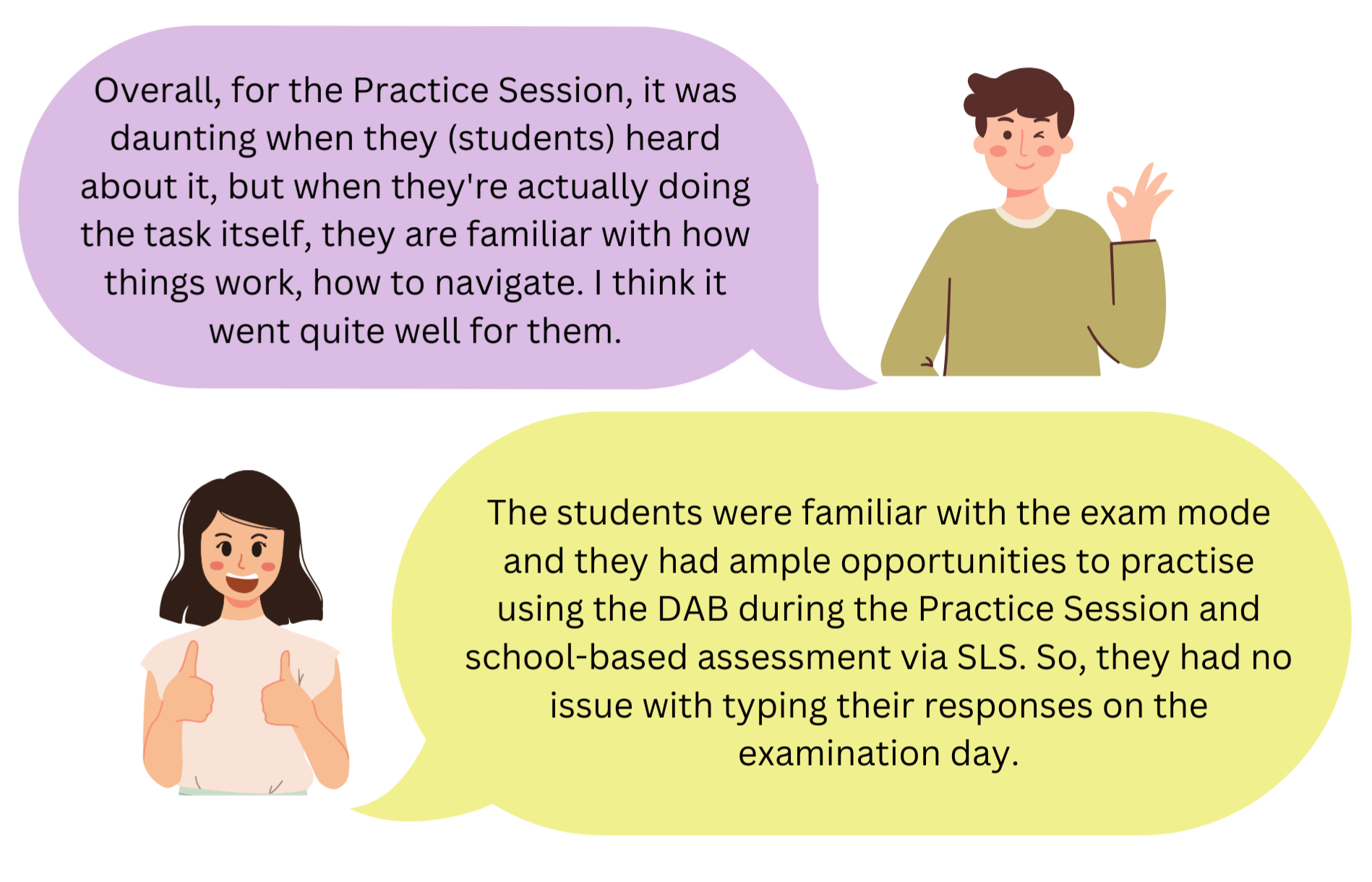
|
N(T)-Level ScienceThe first-ever Science electronic examination took place in Singapore on 13 September 2024 for 3,749 students offering the revised N(T)-Level Science. This e-Examination for Paper 1 incorporated questions with media-rich interactive stimuli such as videos, animations and interactive simulations (VAI), which provide students with dynamic visual representations of complex concepts. This media integration in the e-Examination supports modern educational trends, creating a more immersive and exciting testing experience. It caters to different learning styles (e.g., visual and kinesthetic), and promotes critical thinking by encouraging active engagement with the stimuli. For example, one question in the 2024 e-Examinations featured a drag-and-drop response format, designed to assess students' understanding of energy concepts. This interactive format allowed students to manipulate different visual elements within a virtual environment, giving them an alternative approach to process and demonstrate their understanding. 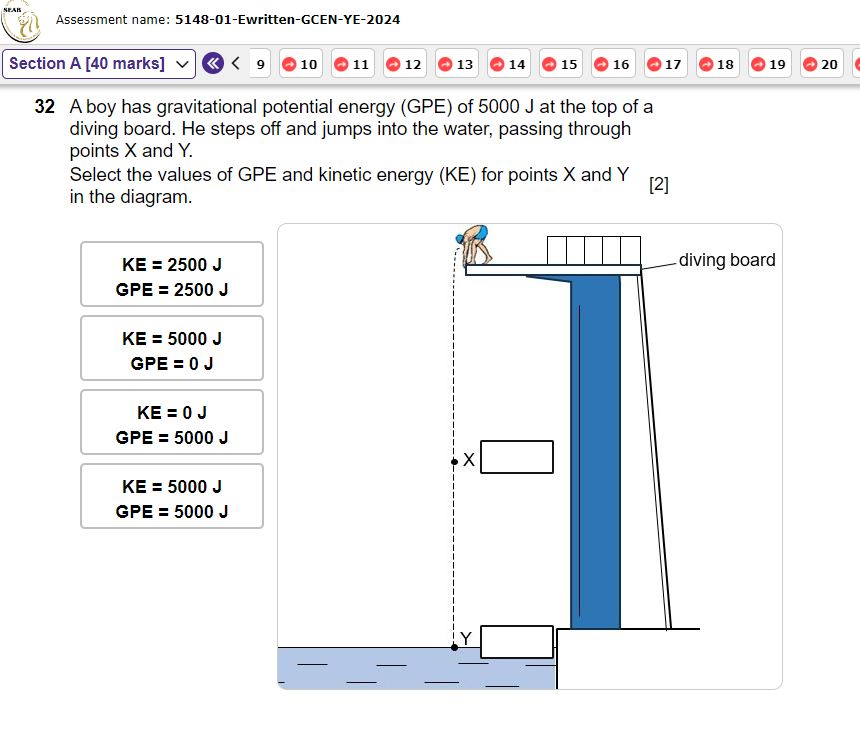 A drag-and-drop question assessing concepts of energy in the 2024 e-Examination.
A drag-and-drop question assessing concepts of energy in the 2024 e-Examination.
Another question utilised an animation depicting the treatment of heart patients with plaque in the arteries. The animation features a realistic, step-by-step visualisation of a complex medical procedure and offers an immersive learning experience that appeals to both visual and kinesthetic learners. 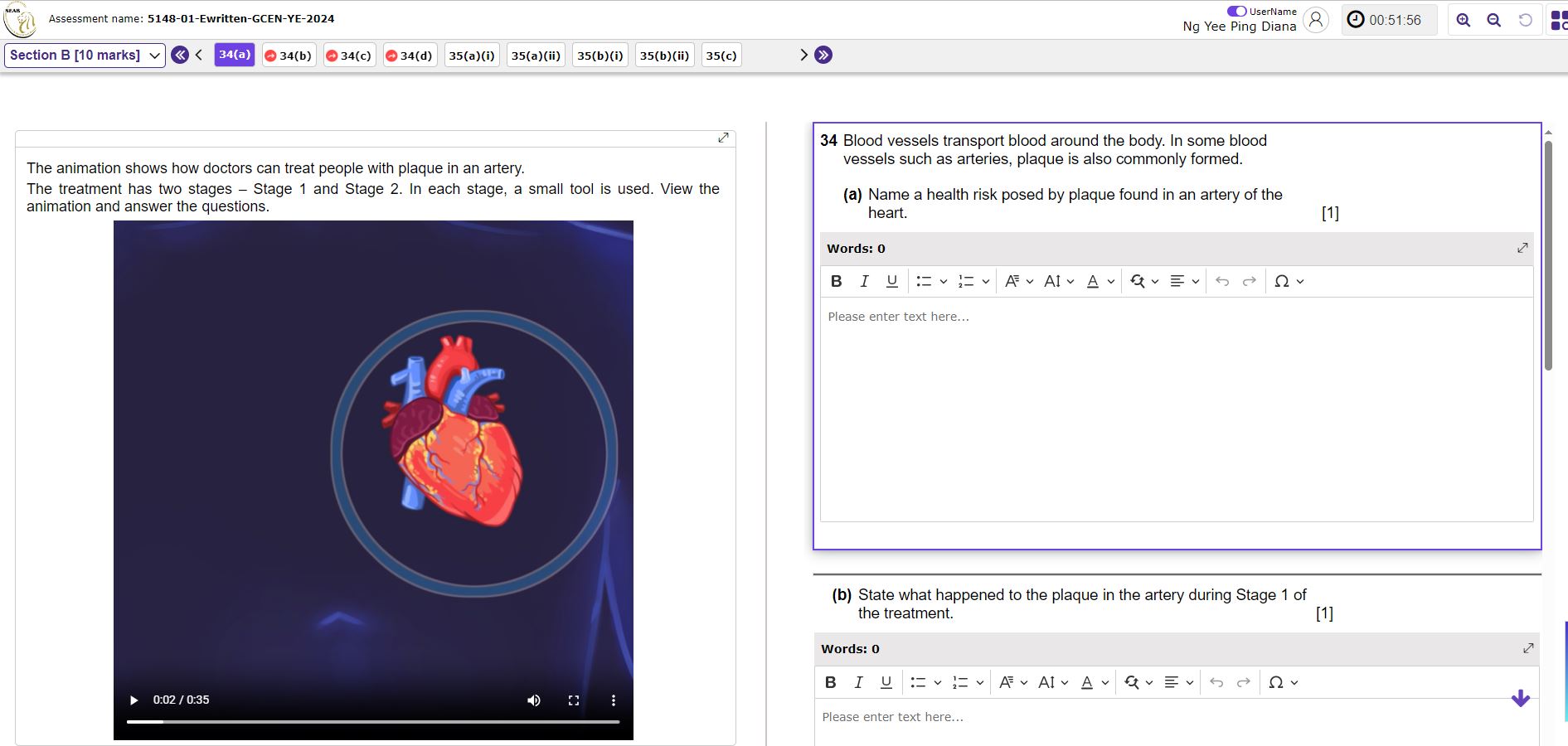 A question in the 2024 e-Examination based on an animation involving the human heart.
A question in the 2024 e-Examination based on an animation involving the human heart.
Additionally, another question featured a video on electrical circuits, where candidates observed the use of a multimeter to measure current flow and analyse the behaviour of circuit components. The interactive nature of the video, paired with questions that require candidates to analyse the setup and apply their knowledge, encourages active problem-solving and critical thinking. 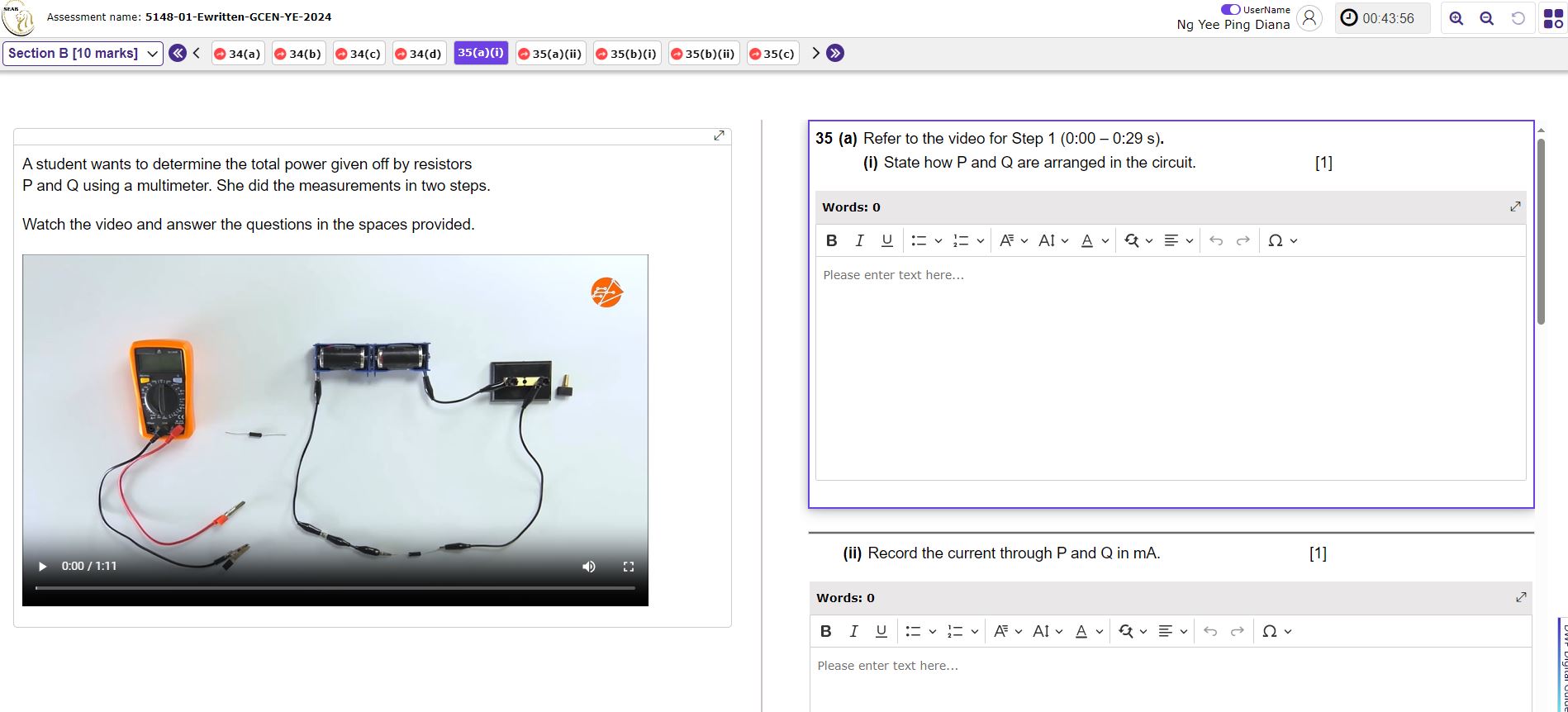 A question in the 2024 e-Examination using a video featuring electrical circuits.
A question in the 2024 e-Examination using a video featuring electrical circuits.
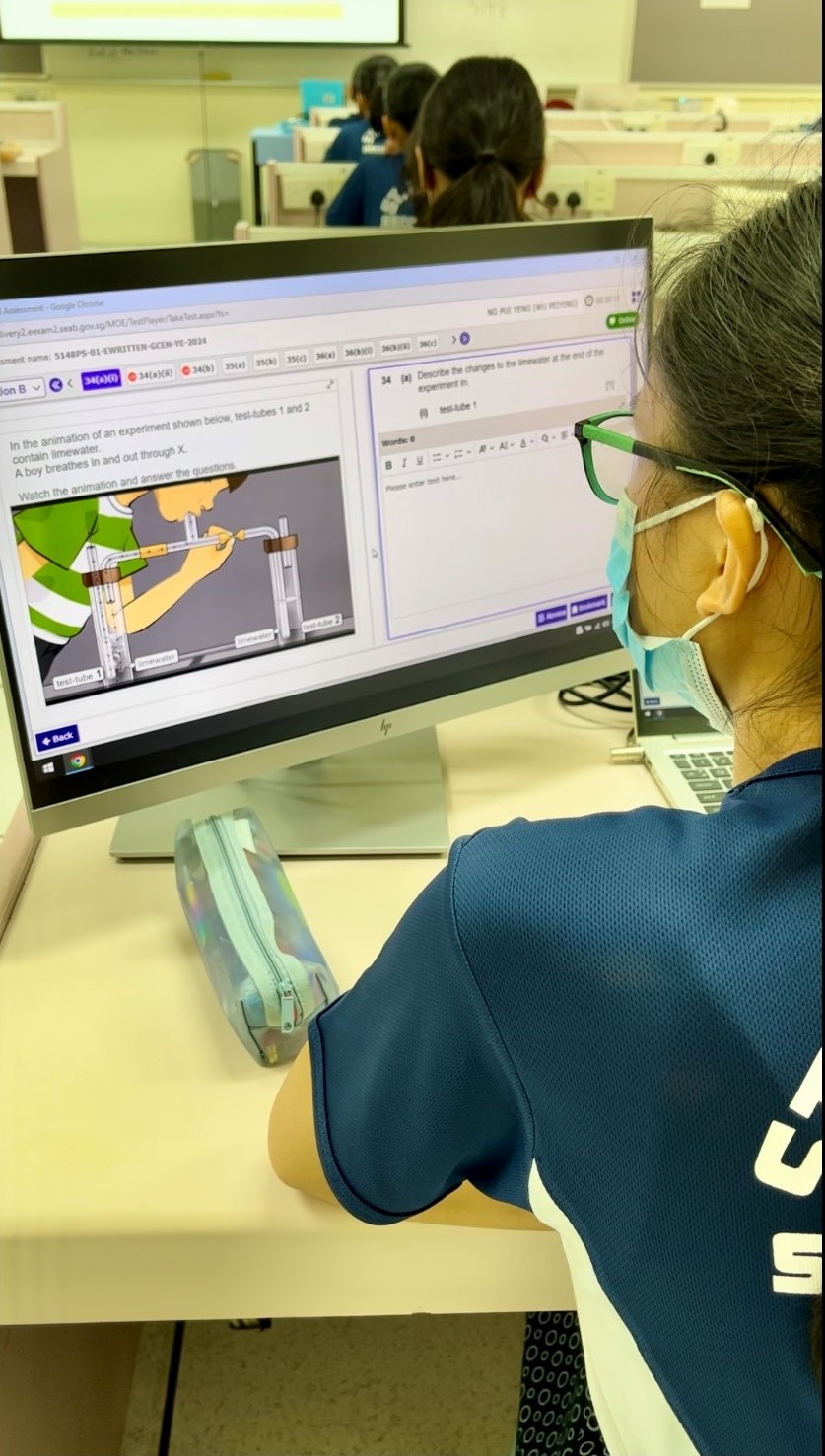 A student in a PS watching an animation to answer a question on the adjoining panel in the e-Examination interface.
A student in a PS watching an animation to answer a question on the adjoining panel in the e-Examination interface.
The feedback from stakeholders was positive with many expressing that the e-mode and VAI-embedded questions make Science assessments more engaging and authentic. The post-practice feedback from the students was highly favourable. For example, 90% of about 2,300 respondents liked the experience of taking the examination using a computer. Notably, 88% preferred to take the examination on a computer rather than on paper. The experience during the PS also impacted their views, with around 92% reporting that they looked forward to taking other examinations on a computer. Encouragingly, observational reports from schools showed that most students with approved Access Arrangements found the functionalities of the eExam system intuitive and were able to navigate its interface with ease. For more detailed information on the assessment scheme and the electronic item formats, interested readers can refer to a previously published article here. |
N(T)-Level Basic Mother Tongue LanguageFollowing the successful implementation and scaling up of e-Written examinations for several Mother Tongue Languages (MTL) subjects, the N(T)-Level Basic MTL (BMTL) Papers 1 and 2 were examined electronically with effect from 2024. The interface of the BMTL Paper 1 e-Exam system is designed to be user-friendly and efficient, with several key features to enhance the examination experience. The word count feature helps candidates keep track of their responses, ensuring they meet the required length. A countdown timer is prominently displayed, allowing students to manage their time effectively throughout the examination. Editing functions enable easy modifications to answers, while the scroll-down icon ensures smooth navigation between sections. Additionally, the "Review" feature allows candidates to revisit and modify previously answered questions before submitting, offering greater flexibility and control during the examination. These features work together to create an intuitive and streamlined examination process.  Interface and features of the BMTL Paper 1* e-Exam system (taken from the PS).
Interface and features of the BMTL Paper 1* e-Exam system (taken from the PS).
During the PS, it was discovered that students taking Basic Tamil Language needed more time and effort to adapt to the Tamil keyboard. Similarly, students taking Basic Chinese Language needed more practices to enhance their accuracy in typing Chinese characters using Hanyu Pinyin. On the day of the examination, several officers from the Assessment Planning and Development Division visited schools to observe the first e-Examination for BMTL candidates firsthand. Candidates generally navigated the eExam system interface with ease, requiring no assistance from invigilators. 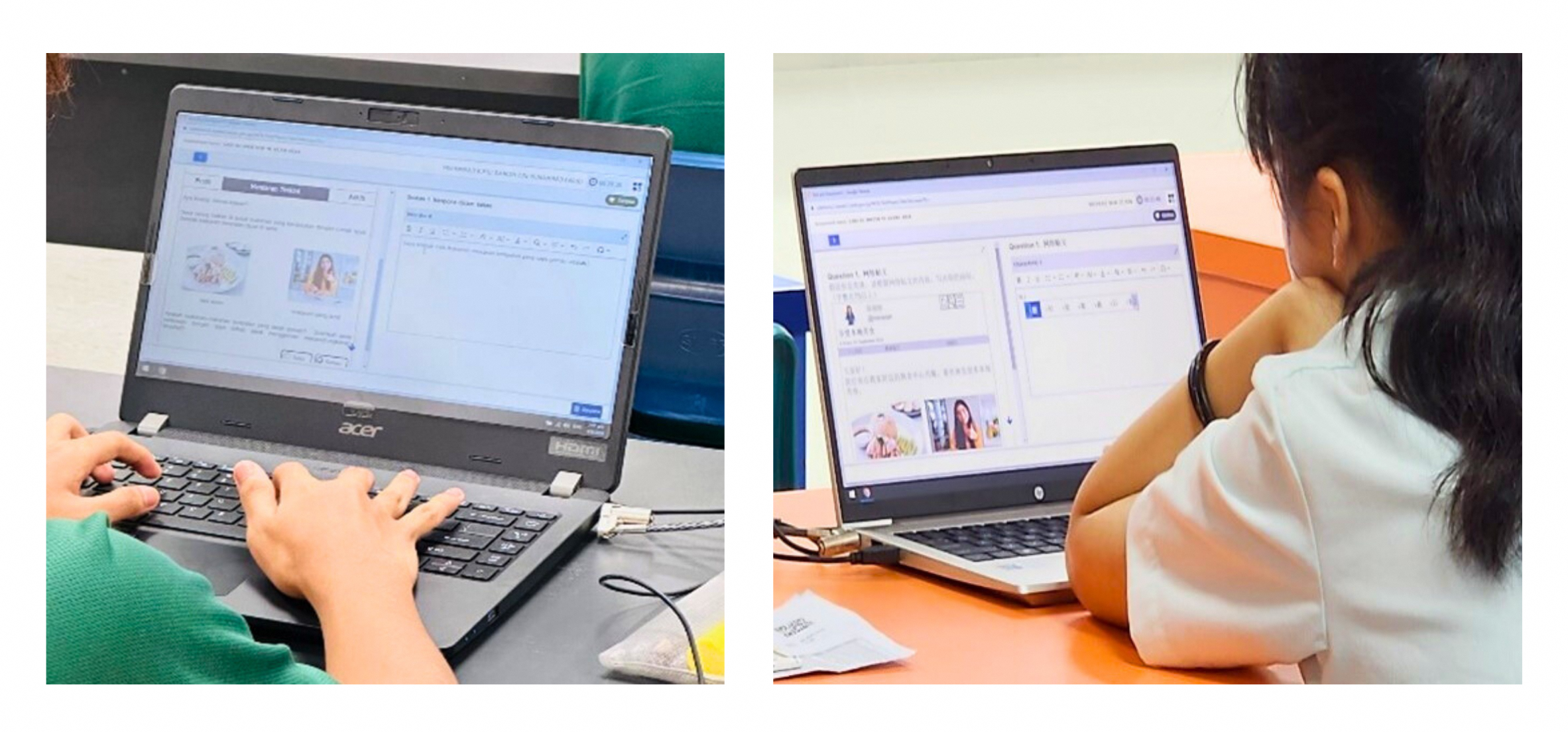 Left: A candidate completing his BML examination*.
Left: A candidate completing his BML examination*. Right: A candidate using the Hanyu Pinyin feature found in the eExam system* for BCL. 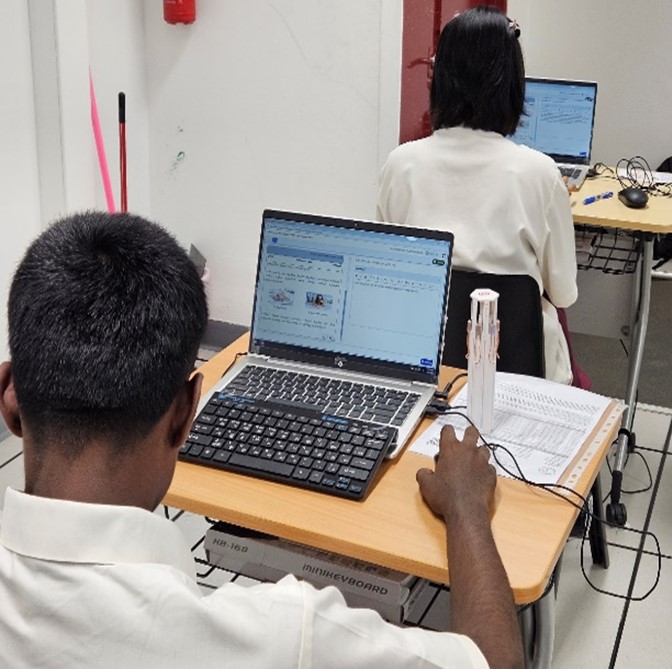 A BTL candidate completing his examination* using the Tamil keyboard.
A BTL candidate completing his examination* using the Tamil keyboard.
Overall, candidates and teachers shared positive feedback on the first implementation of the BMTL e-Examination. Here is some of their feedback: Feedback from Candidates 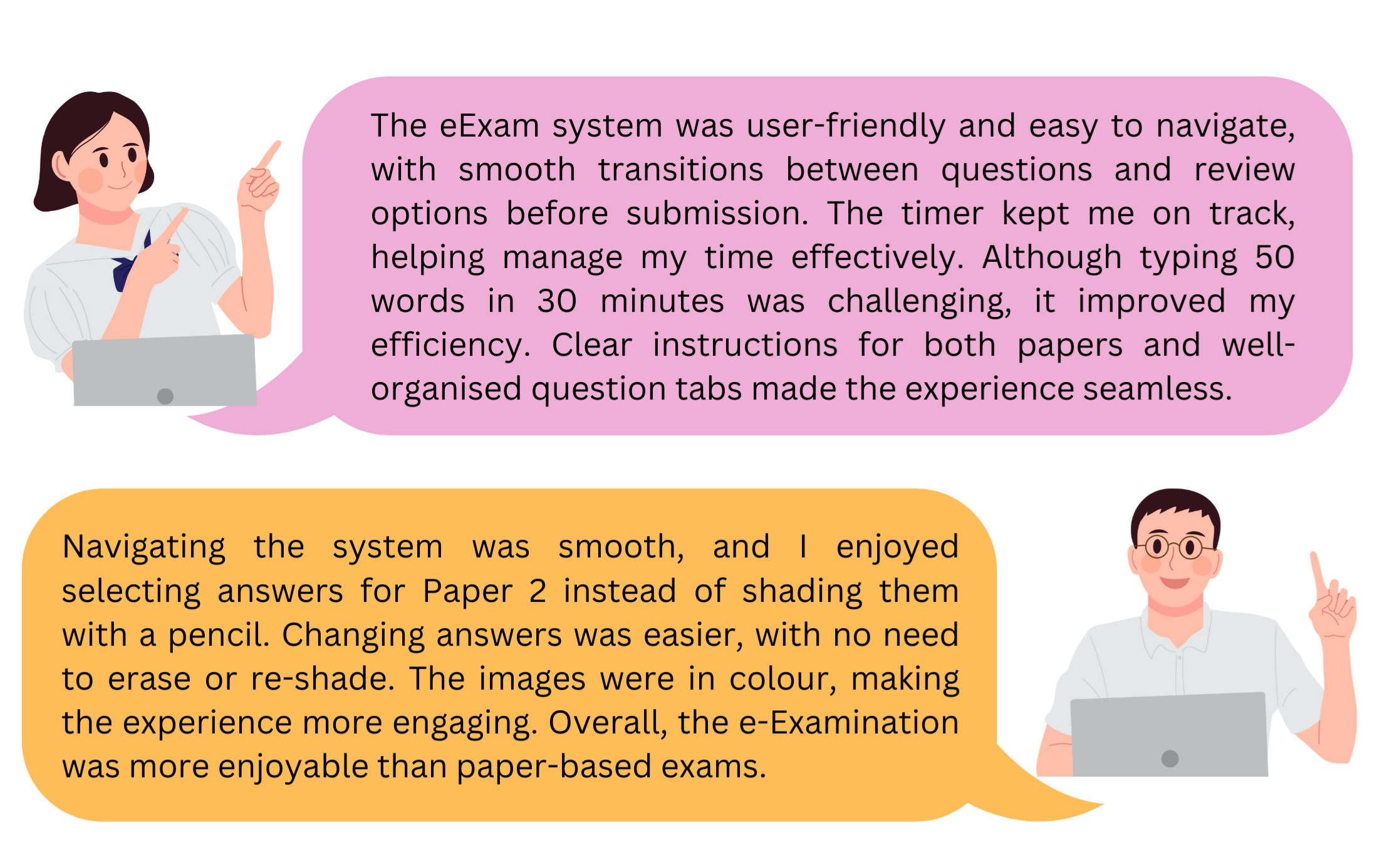
Feedback from Teachers 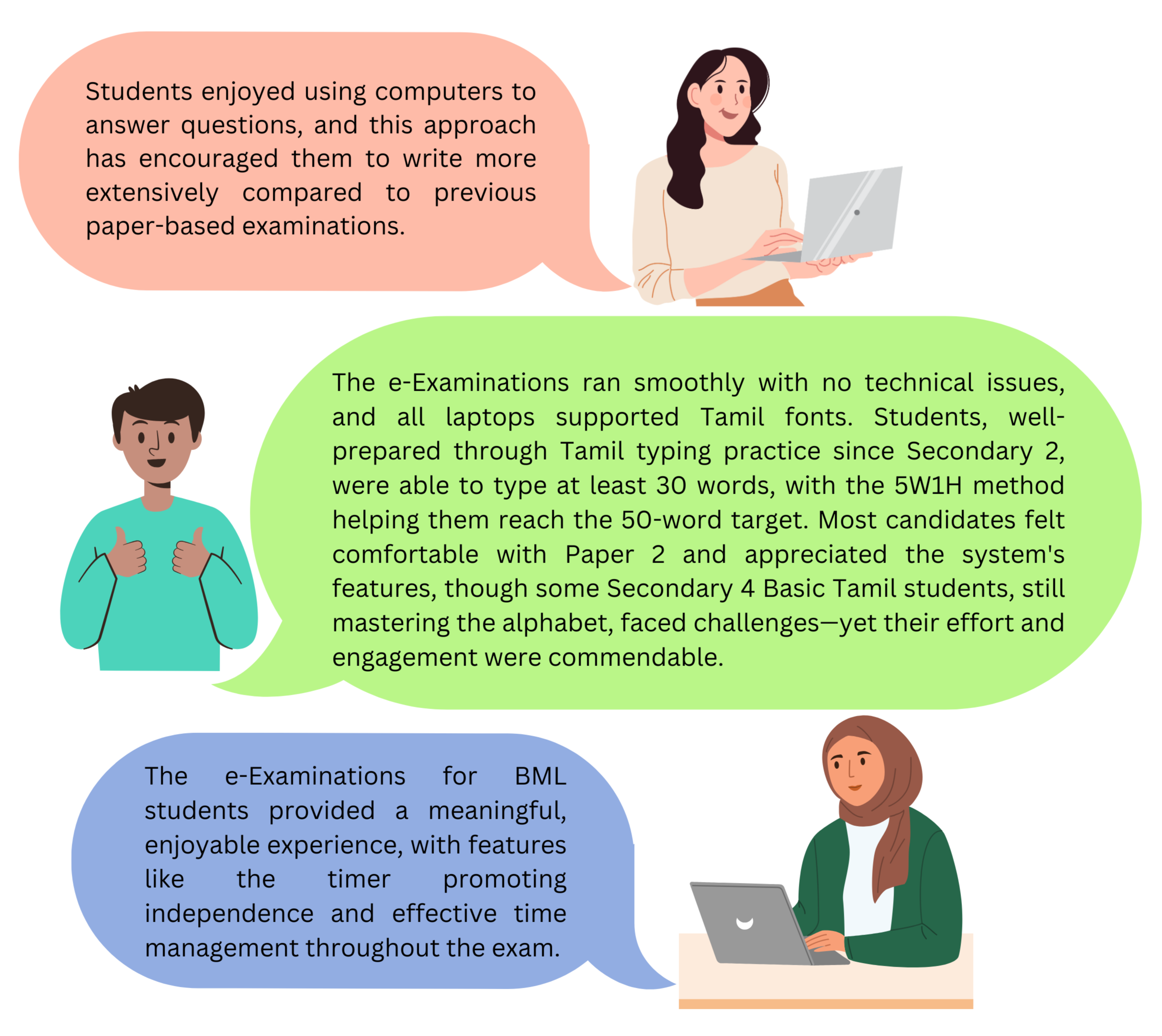
|
The successful implementation of the e-Examinations for the N(A)-Level Social Studies, N(T)-Level Science, and N(T)-Level Basic Mother Tongue Languages in 2024 reinforces SEAB’s continued dedication to assessment excellence. As with other subjects already assessed electronically, the positive responses from the educators and students highlighted the eExam system's user-friendliness, and the engaging, authentic nature of the assessment experience. SEAB will continue to design assessments that are relevant and effective in meeting the education goals of Singapore.
*Note: All images used in the examination questions have been credited to the respective sources in the eExam system.


